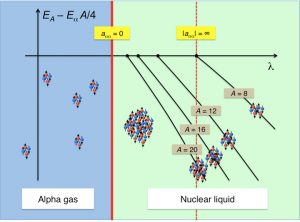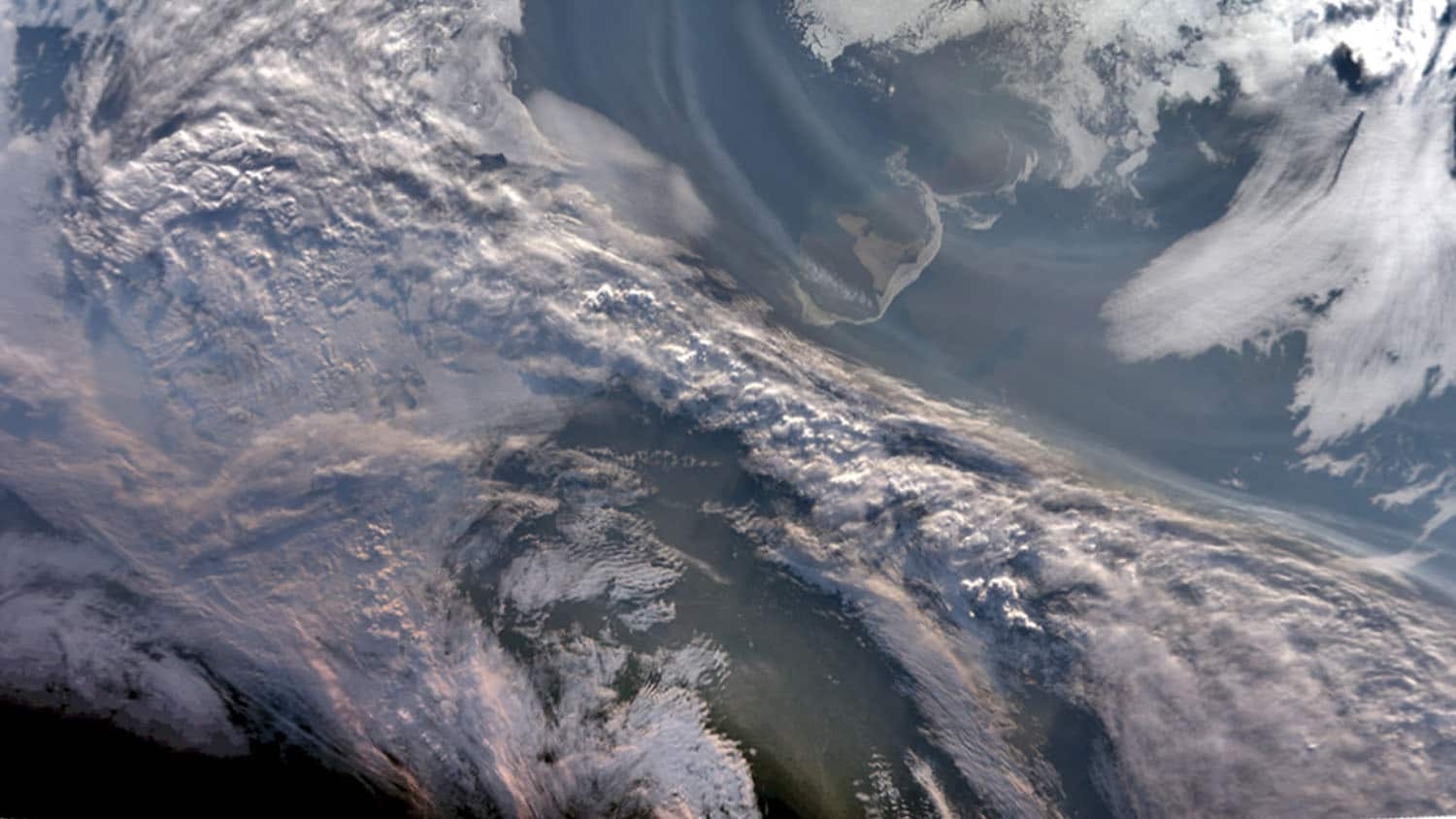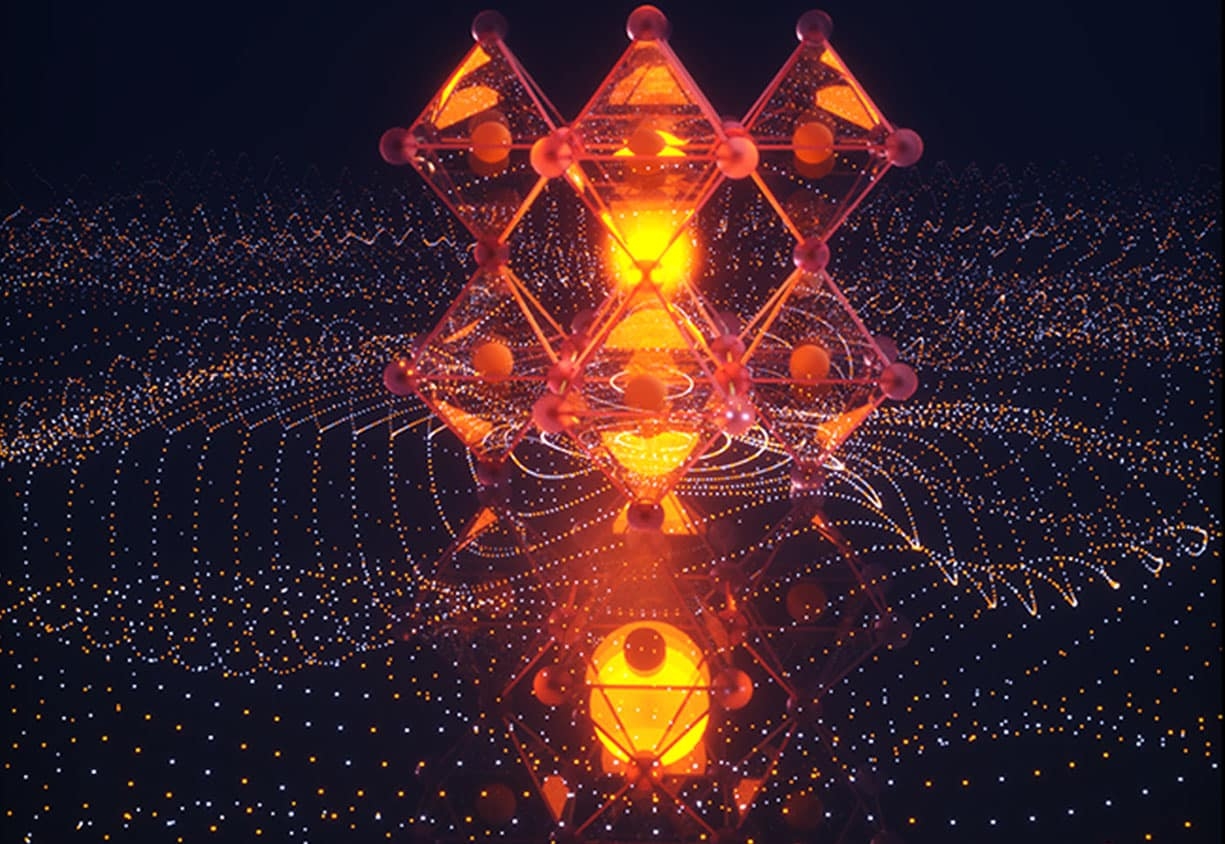Nucleon Interactions Key to Quantum Phase Transition


Research led by North Carolina State University sheds new light on the ways in which protons and neutrons can bind and even undergo a quantum phase transition. The work has implications for understanding the connections between nuclear interactions and nuclear structure found in nature.
NC State physicist Dean Lee and collaborators are interested in figuring out exactly how protons and neutrons bind to form nuclei. These particles are the building blocks of the universe, coming together to form nuclei like Helium-4, or alpha particles, which in turn play a role in the synthesis of carbon and oxygen within stars.
Protons and neutrons can have either spin up or spin down, and these four distinct nucleons can combine to form nuclei. Since two nucleons of the same type and spin cannot occupy the same state, the Helium-4 nucleus is special since it is composed of one of each type of nucleon – spin-up and spin-down varieties of both protons and neutrons.
Lee, along with colleagues from Bonn University, Bochum University, Forschungszentrum Juelich and Mississippi State University ran quantum Monte Carlo simulations on a numerical lattice to predict how protons and neutrons form nuclei, and how those nuclei interact with each other. They focused on the form of the interactions among nucleons. Specifically, they considered two types of interactions: local interactions, where the particles’ positions relative to one another don’t change; and non-local interactions, where the positions do change.
Lee and his colleagues ran simulations of nuclei of up to 20 nucleons formed by local and non-local interactions. Their initial intent was to make the simulations more efficient, but they quickly discovered something more interesting.
“We found a quantum phase transition we didn’t expect to see,” Lee says. “When we put two Helium-4 nuclei or alpha particles together using a local interaction for the nucleons, they stuck together, but with non-local interactions they didn’t. The interaction between the alpha particles at zero temperature determined whether we ended up with a Bose gas, or a nuclear liquid. And those alpha particle interactions were dependent upon the strength and locality of the nucleon interactions.
“What this tells us is that nature itself is close to an instability we haven’t seen before,” Lee adds. “If you changed one small parameter, things in our universe could be very different. These simulations offer a great window into how forces are connected to structure.”
The research appears in Physical Review Letters. Funding was provided by the U.S. Department of Energy (grant DE-FG0203ER41260), the National Science Foundation (grant PHY-1307453), the Deutsche Forschungsgemeinschaft, the Helmholtz Association and the BMBF.
-peake-
Note to editors: Abstract of release follows.
“Nuclear binding near a quantum phase transition”
DOI: 10.1103/PhysRevLett.117.132501
Authors: Serdar Elhatisari, Jose Alarcón, Nico Klein, Ulf-G. Meiβner, Bonn University; Ning Li, Dechuan Du, Bing-nan Lu, Timo Lähde, Forschungszentrum Jülich; Alexander Rokash, Evgeny Epelbaum, Hermann Krebs, Ruhr-Universität Bochum; Dean Lee, North Carolina State University; Gautam Rupak, Mississippi State University
Published: Sept. 7, 2016 in Physical Review Letters
Abstract:
How do protons and neutrons bind to form nuclei? This is the central question of ab initio nuclear structure theory. While the answer may seem as simple as the fact that nuclear forces are attractive, the full story is more complex and interesting. In this work we present numerical evidence from ab initio lattice simulations showing that nature is near a quantum phase transition, a zero-temperature transition driven by quantum fluctuations. Using lattice effective field theory, we perform Monte Carlo simulations for systems with up to twenty nucleons. For even and equal numbers of protons and neutrons, we discover a first-order transition at zero temperature from a Bose-condensed gas of alpha particles (4He nuclei) to a nuclear liquid. Whether one has an alpha-particle gas or nuclear liquid is determined by the strength of the alpha-alpha interactions, and we show that the alpha-alpha interactions depend on the strength and locality of the nucleon-nucleon interactions. This insight should be useful in improving calculations of nuclear structure and important astrophysical reactions involving alpha capture on nuclei. Our findings also provide a tool to probe the structure of alpha cluster states such as the Hoyle state responsible for the production of carbon in red giant stars and point to a connection between nuclear states and the universal physics of bosons at large scattering length.
This post was originally published in NC State News.
- Categories:


